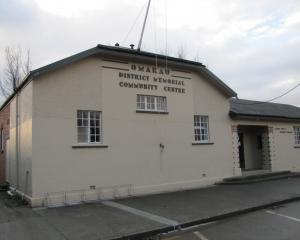
Gold fever: Lawrence man Ernie McCraw tries his hand at prospecting in Tuapeka Creek, near Lawrence, where Gabriel Read struck gold. Mr McCraw’s book about Read should be published in time for the 150th anniversary celebrations of the historic discovery, in 2011.
‘‘It's like gold mining. You're finding nuggets fairly regularly with all the information.''
The retired farmer, amateur prospector and history lover has spent 10 years compiling letters and information about the man who discovered gold in the Tuapeka Stream, sparking a massive gold rush that set the foundations for Dunedin and Otago.
‘‘He ignited the economy of the country at a time when it was quite depressed.''
Initially intending to write a book about the first three years of the Tuapeka goldfields, he decided to narrow his search when he realised the subject was too broad, and that there was a lot of information about Gabriel Read himself. However, not all of it was accurate.
A large part of Mr McCraw's research has been checking contradictory information that has appeared in various publications.
‘‘I think if it's history it should be right, and if it's wrong it should be corrected.''
Even the date on which Read discovered gold was disputed, but Mr McCraw has painstakingly researched documents detailing Read's movements the days before his historic discovery, to prove that the actual date he found gold was May 25, 1861.
Read's birth date was often listed as being between 1824 and 1826, but Mr McCraw had newspaper entries and his death certificate to prove it was August 21, 1825.
While a lot of information existed about Read's time in Otago, little was known about his earlier life, Mr McCraw said.
‘‘Almost an outcast in his family'' in Tasmania, Read suffered serious head injuries during a fall when hunting as a teenager, and suffered personality changes after that.
One of 14 children from his father's two marriages, he was incredibly well educated. The only brother not to be set up on a farm by his father, Read prospected for gold in California and Australia before hearing of the discovery of gold in Mataura, Southland.
Watching a boat heading from Hobart to Port Chalmers being loaded with horses in February 1861 he made a spur-of-the-moment decision to go and ‘‘within hours he was on [the boat]'', Mr McCraw said.
Encouraged by a chance meeting at Tokomairiro with farmer John Hardy, who was a member of the Otago Provincial Council, he later headed towards Lawrence, making his historic discovery in the area now known as Gabriels Gully and eventually claiming two rewards for finding a ‘‘payable goldfield''.
After further prospecting and travelling throughout New Zealand, he returned to Australia in late 1862. In 1887, he was committed to a mental institution, where he lived until his death from a stroke in 1894. He is buried in an unmarked and unknown grave in a cemetery at New Norfolk, near Hobart.
Read was married to a first cousin but had no children, and ‘‘got over the gold fever'' and its often fleeting riches, Mr McCraw said.
‘‘Money has wings and is soon departed,'' Read later said.
Research for Mr McCraw's book would be completed within the next six to seven months, while funding and publishers were finalised, he said.
It was hoped to be printed in time for the 150th anniversary celebrations of Read's discovery, in 2011.
-Pam Jones











